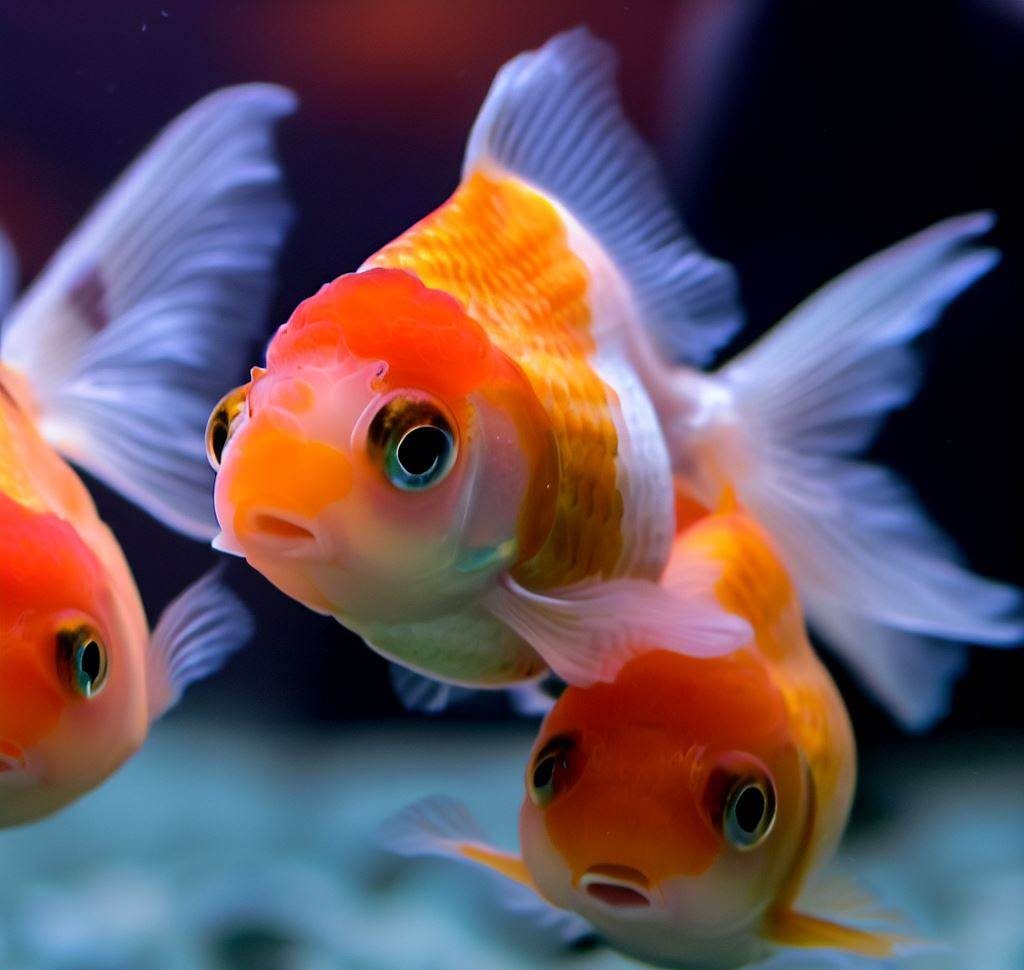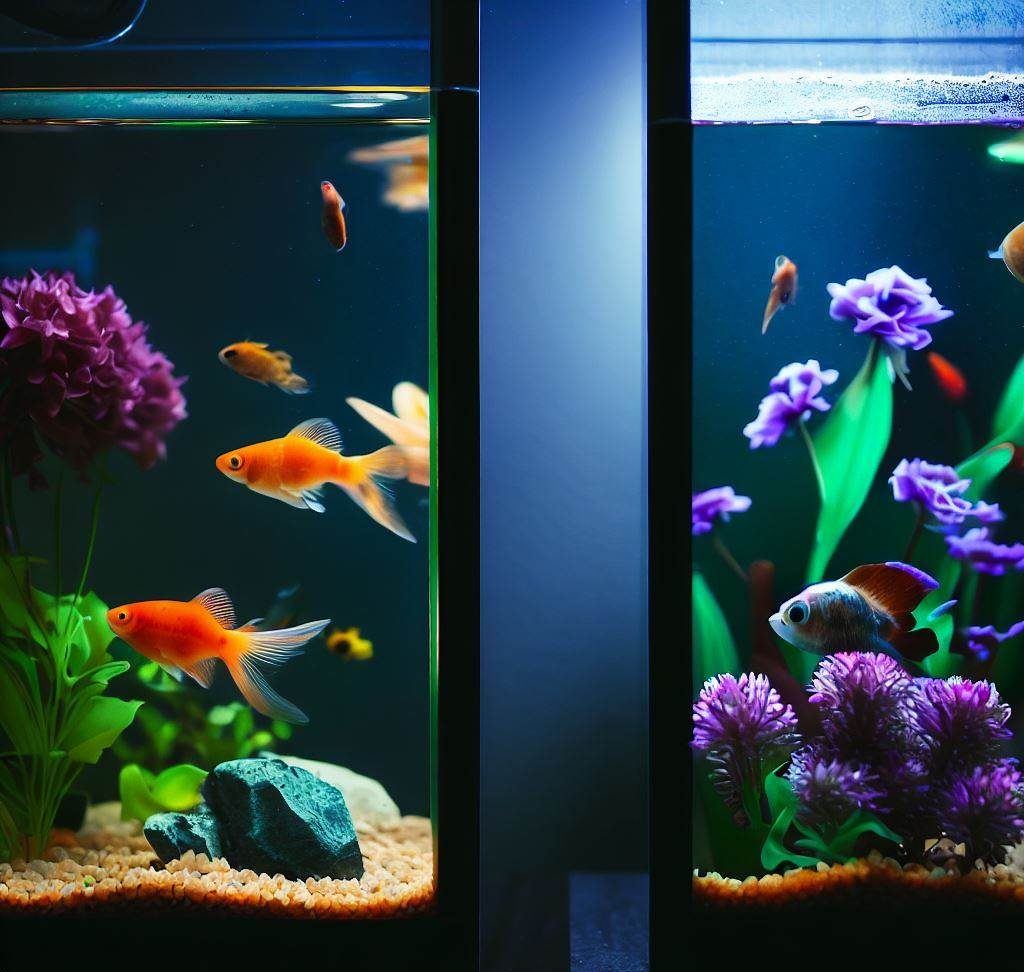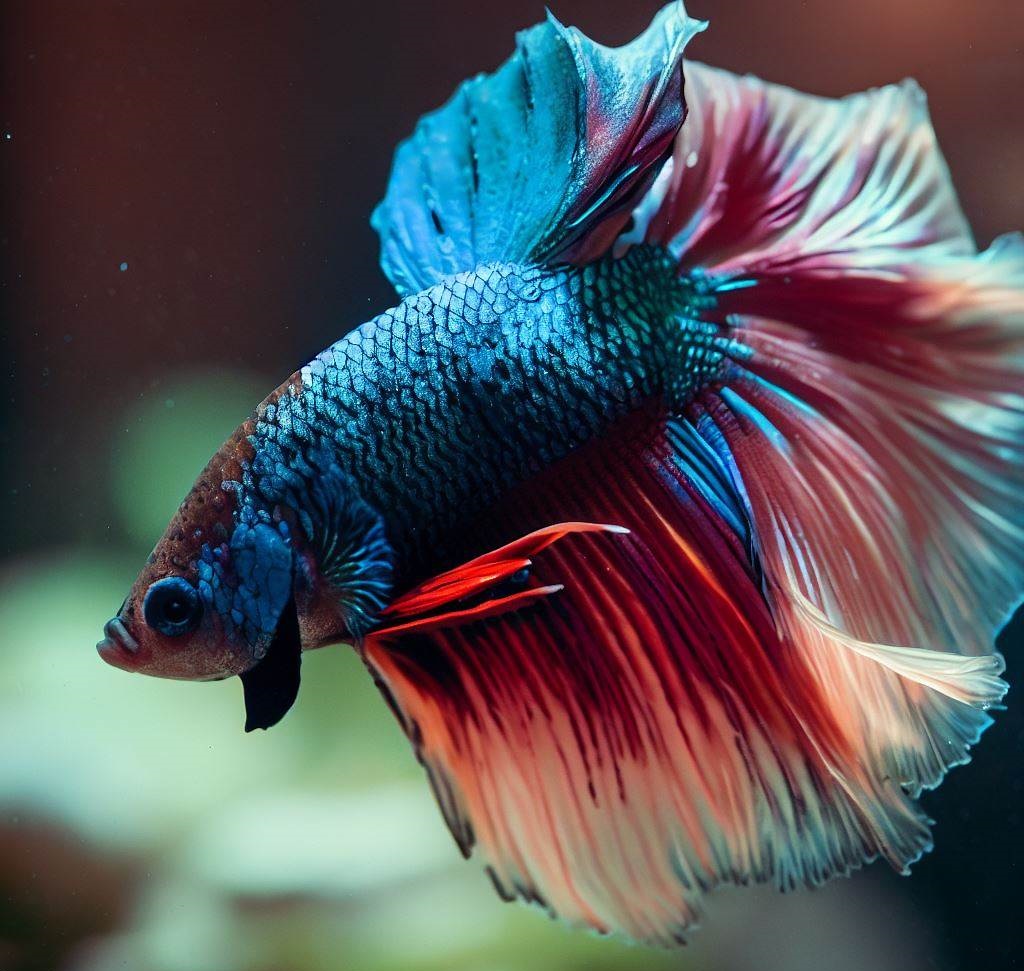What Are The Best Fish For Beginners?
Dipping your toes into the world of fishkeeping can be an enchanting experience.
Table of Contents
Introduction: The Joys of Starting an Aquarium
For many, the allure of the underwater world, with its vibrant colors and mesmerizing creatures, is irresistible.
But what makes starting an aquarium, particularly with the best aquarium fish for beginners, such a compelling venture?
Why Fishkeeping is a Rewarding Hobby
From the moment you fill up your first tank to watching your fish thrive, the journey of fishkeeping is filled with excitement and discoveries. The tranquil nature of an aquarium has a calming effect on the mind, serving as a mini-escape from the hustle and bustle of daily life. Every time you peer into the tank, you’re met with a different, yet equally captivating scene.
Imagine this: a school of Neon Tetras, one of the best aquarium fish for beginners, darts around, their bright colors shimmering against the lush green backdrop of aquatic plants. The sight itself is therapeutic.
Moreover, as you delve deeper into the hobby, you’ll find that fishkeeping offers a plethora of opportunities for continuous learning. From understanding water parameters to discovering the fascinating behavior of different fish species, the knowledge you’ll amass is immense.
For example, did you know that Bettas, widely regarded as one of the best aquarium fish for beginners, have an organ known as the labyrinth that allows them to breathe atmospheric air?
The Importance of Choosing The Best Aquarium Fish for Beginners
Embarking on your fishkeeping journey with beginner-friendly fish is paramount. These fish tend to be hardy, adaptable, and forgiving of the common mistakes beginners might make. They offer the perfect introduction to the intricate world of aquariums without overwhelming the novice aquarist.
Starting with the best aquarium fish for beginners ensures that you have a positive experience from the get-go. Fish such as Guppies or Platies are not only vibrant and active but also thrive in a variety of conditions, making them ideal choices for newcomers.
By choosing these beginner-friendly species, you’re setting yourself up for success, paving the way for a fulfilling and long-lasting relationship with the hobby.
In conclusion, the world of fishkeeping awaits with open arms. As you begin, remember to start with the best aquarium fish for beginners, and soon, you’ll find yourself immersed in the joys and wonders of the underwater realm.

Understanding the Basics of Aquarium Setup
So, you’ve decided to venture into the mesmerizing world of fishkeeping. Congratulations! But before you dive headfirst, let’s acquaint you with the basic setup fundamentals. After all, ensuring your best aquarium fish for beginners have a well-established environment is key to their health and happiness.
The Difference Between Freshwater and Saltwater Tanks
First and foremost, understanding the type of water environment you’re aiming to create is crucial. In the realm of aquariums, there are primarily two broad categories: freshwater and saltwater.
- Freshwater Tanks: These are the most common choice for newbies. Freshwater aquariums house fish that thrive in rivers, lakes, and ponds. These setups tend to be less complicated and more affordable than their saltwater counterparts. If you’re eyeing the best aquarium fish for beginners like Guppies, Tetras, or Platies, they’ll be right at home in a freshwater tank.
- Saltwater Tanks: Venturing into saltwater territories is a tad more intricate. Saltwater aquariums are designed for fish from the oceans and seas. They demand specific salt levels and are generally considered more challenging because of the delicate balance they require. However, the reward? A breathtaking array of marine life and vivid corals.
Essential Equipment for a Beginner’s Aquarium
Once you’ve chosen between freshwater and saltwater, it’s time to gather your equipment. For those starting with the best aquarium fish for beginners, here are the basics:
- Tank: The size will depend on the fish species and their quantity. Remember, bigger often means more stability in terms of water parameters.
- Filter: Essential for removing waste and maintaining water quality. For beginners, a hang-on-back (HOB) filter or an internal filter works wonders.
- Heater: A must-have if you’re keeping tropical fish. It ensures the water remains at an ideal temperature.
- Lighting: Essential for both viewing pleasure and the well-being of plants and fish.
- Substrate: Gravel or sand forms the base of your tank, and certain fish have specific substrate preferences.
- Decor: Plants, rocks, and caves provide shelter and entertainment for your fish.
Basic Water Parameters and Their Significance
Lastly, let’s dive into the essential water parameters. Regardless of whether you’re housing the best aquarium fish for beginners or more advanced species, these parameters are pivotal:
- pH Level: Measures the acidity or alkalinity of water. Fish have specific pH range preferences, and sudden changes can be harmful.
- Ammonia, Nitrites, and Nitrates: Byproducts of fish waste and uneaten food. Monitoring these ensures your tank’s nitrogen cycle is functioning properly.
- Temperature: Fluctuations can stress fish. Maintaining a stable temperature is crucial, especially for tropical species.
- Hardness: Refers to the mineral content in water. Some fish prefer hard water, while others thrive in softer conditions.
To wrap it up, starting an aquarium is a thrilling endeavor. Equip yourself with the right knowledge, opt for the best aquarium fish for beginners, and you’ll be on your way to creating a captivating underwater paradise.
Top 5 Best Aquarium Fish for Beginners
If you’re dipping your toes into the rewarding world of fishkeeping, starting with the best aquarium fish for beginners can make your journey enjoyable and stress-free. Here’s a guide to the top five beginner-friendly fish species and what makes them the ideal candidates for your first aquatic endeavor.
1. Betta Fish (Betta splendens)
Known as the Siamese fighting fish and for their vibrant colors and flowing fins, Betta fish make a captivating addition to any aquarium.
Ideal Tank Conditions: Contrary to the myth, Betta fish need more than a small bowl to thrive. A 5-gallon tank with a gentle filter, heater, and some hiding spots makes an ideal Betta habitat. They prefer a pH between 6.5 and 7.5 and a temperature around 78 to 80 degrees Fahrenheit.
Benefits of Choosing Betta as Your First Fish: Aside from their stunning looks, Betta fish are hardy, adapt well to various environments, and are quite intelligent. You might even spot your Betta responding to you as you approach the tank!
Common Misconceptions about Betta Fish Care: Betta fish are often thought to be low-maintenance, living happily in stagnant water. This is a myth. Bettas thrive in clean, warm water and require a varied diet for optimum health.
2. Guppies (Poecilia reticulata)
Guppies are small, lively fish known for their vibrant colors and patterns, making them one of the best aquarium fish for beginners.
Why Guppies Are Great for Beginners: Guppies are hardy, adaptable, and breed easily. They can endure a range of water conditions and aren’t fussy eaters. With their peaceful nature, they make great tank mates with other peaceful species.
Tank Mates That Work Well with Guppies: Guppies do well with similar-sized, peaceful species such as Mollies, Tetras, and Platies. Avoid pairing Guppies with larger or aggressive fish that might see them as a snack!
Breeding and Their Prolific Nature: Guppies breed frequently and rapidly, so you could end up with a lot of fish quickly! If you don’t want a tank full of Guppies, make sure to separate the males and females.
3. Platies (Xiphophorus)
Platies are active, peaceful fish that come in a variety of colors, perfect for adding a pop of color to your aquarium.
Characteristics and Color Varieties: Platies come in an array of colors and patterns, including red, orange, yellow, blue, and more. They’re lively, active swimmers, and they love to graze on algae, making them beneficial to your tank’s ecosystem.
Easy Care Requirements: Platies are omnivorous and accept most types of fish food. They are adaptable to a wide range of water conditions, making them one of the best aquarium fish for beginners.
Ideal Water Conditions: Platies thrive in a pH range between 6.8 and 8.0, with a temperature between 70 and 78 degrees Fahrenheit.
4. Goldfish (Carassius auratus)
Goldfish are one of the most popular choices among beginners. However, their care requirements are often misunderstood.
The Myth vs. Reality of Goldfish Care: Contrary to popular belief, Goldfish need much more than a small bowl. They are large, messy fish that produce a significant amount of waste. Thus, they need a spacious, well-filtered tank to thrive.
Tank Size and Setup Recommendations: A minimum of 20-30 gallons for a single Goldfish is essential, with an additional 10-20 gallons for each additional fish. Also, Goldfish prefer cooler temperatures, so a heater is typically unnecessary.
Common Mistakes Beginners Make with Goldfish: Overstocking and overfeeding are common mistakes. Remember, Goldfish are large and produce a lot of waste. Overfeeding can quickly lead to poor water conditions.
5. Neon Tetras (Paracheirodon innesi)
With their bright blue and red stripes, Neon Tetras are a sight to behold, especially when kept in a school.
Their Captivating Neon Glow: Neon Tetras get their name from the bright, iridescent blue line running from their nose to their adipose fin. This, combined with a red stripe on their tail, makes them a vibrant addition to any aquarium.
Schooling Behavior and Tank Mate Compatibility: Neon Tetras are schooling fish, meaning they prefer to be in groups of six or more. They’re peaceful, making them compatible with most other non-aggressive species.
Water Conditions for Optimum Health: Neon Tetras prefer slightly acidic water with a pH between 6.0 and 7.0 and temperatures between 70 and 81 degrees Fahrenheit.
Selecting the best aquarium fish for a beginner sets you up for success on your fishkeeping journey. Whether it’s the vibrant Betta, lively Guppy, colorful Platy, misunderstood Goldfish, or glowing Neon Tetra, there’s a perfect beginner fish just waiting for you.

Maintenance Tips for a Hassle-free Aquarium
Congratulations on your decision to delve into the world of fishkeeping! The aquarium you’ve set up will not only house some of the best aquarium fish for beginners but will also become a serene escape right in your home. Just like any hobby, there are ways to simplify the process and ensure it remains a joy, not a chore. Here’s your guide to maintaining a hassle-free aquarium.
Routine Water Changes and Why They’re Vital
Imagine living in a room where the air is never refreshed; sounds suffocating, right? Similarly, your fish rely on clean water to thrive.
- Importance of Regular Changes: Fish excrete waste, uneaten food decays, and toxins gradually accumulate. Changing 10-20% of your tank’s water weekly dilutes these harmful substances, ensuring a healthier environment for your aquatic friends. For those keeping the best aquarium fish for beginners, regular water changes can prevent many common fish ailments.
- How to Change: Use a gravel vacuum to siphon out water, which simultaneously cleans the substrate. Refill with dechlorinated water that’s roughly the same temperature as your tank’s.
Introduction to Beneficial Bacteria and Cycling
The secret to a thriving, hassle-free aquarium lies in something invisible to the naked eye: beneficial bacteria.
- What is Cycling?: Cycling refers to the process of establishing colonies of beneficial bacteria in your tank. These bacteria convert harmful ammonia, produced by fish waste, into nitrites and then into less harmful nitrates.
- The Patient Process: It’s tempting to add the best aquarium fish for beginners immediately after setting up your tank. But waiting for your tank to cycle (which can take 4-6 weeks) is crucial for their health.
The Role of Plants in an Aquarium Ecosystem
Adding plants isn’t just about aesthetics; they play a pivotal role in the ecosystem.
- Natural Filters: Plants absorb nitrates, ammonia, and other waste products, aiding in keeping the water parameters stable.
- Oxygen Providers: Through photosynthesis, aquatic plants release oxygen, which is essential for your fish.
- Shelter and Security: Especially for the best aquarium fish for beginners, plants provide hiding spots and reduce stress, leading to happier and healthier fish.
In essence, maintaining a hassle-free aquarium is about understanding its intricate ecosystem and ensuring a balance. With regular water changes, a bit of patience during cycling, and the addition of live plants, your fishkeeping journey is bound to be smooth and enjoyable.
Avoiding Common Mistakes in Fishkeeping
As you venture into the world of fishkeeping, equipped with a list of the best aquarium fish for beginners, it’s essential to be aware of common pitfalls. Being informed is the first step to ensuring your aquatic pets lead a long, healthy life. Here are some of the most frequent mistakes made by novice aquarists and how to avoid them.
Overfeeding: Why Less is Often More
It’s easy to assume that your fish are always hungry. Those pleading eyes every time you approach the tank can be deceiving!
- Dangers of Overfeeding: Excess food can decay, leading to ammonia spikes, which are toxic for fish. Moreover, overfed fish can suffer from internal complications and a reduced lifespan.
- Feeding the Right Amount: As a rule of thumb, feed your fish only what they can consume in 2-3 minutes. For those with the best aquarium fish for beginners, consider using specialized pellets or flakes that cater to their dietary needs.
- Frequency Matters: It’s often better to feed small amounts multiple times a day than one large meal.
The Importance of Quarantine for New Fish
Your excitement at introducing new fish to your tank is understandable. But, a simple step can save you from potential heartache.
- Why Quarantine?: New fish can carry diseases or parasites. By quarantining, you can observe them for signs of illness and treat them if necessary, preventing potential outbreaks in your main tank.
- How Long?: A 2-4 week quarantine period is recommended. This gives ample time to observe and treat any issues.
Understanding the Signs of Stress and Illness
Even the best aquarium fish for beginners can succumb to stress or illness. Recognizing the signs early is vital.
- Symptoms to Watch For: Lethargy, loss of appetite, erratic swimming, faded colors, and clamped fins are a few indicators of stress or sickness.
- Responding Promptly: If you notice any of these signs, check your water parameters first. Often, stress is a result of suboptimal water conditions. If the water is fine, consider other potential stressors or consult an expert for advice on treatments.
In summary, while fishkeeping is a deeply rewarding hobby, it’s essential to remain vigilant and informed. By being proactive and avoiding these common mistakes, you’ll ensure that your selection of fish will thrive in their new environment.
FAQ Section: Best Aquarium Fish for Beginners
Embarking on your fishkeeping journey can be filled with numerous questions. As you look for the best aquarium fish for beginners, here’s a handy FAQ to guide you through some of the most common queries.
What is the ideal tank size for beginners?
Starting with a slightly larger tank (20-30 gallons) is often recommended. Bigger tanks are more forgiving when it comes to water parameter fluctuations. Moreover, they offer ample space for the best aquarium fish for beginners and give you room to explore aquascaping.
How often should I feed my fish?
It’s best to feed your fish once or twice a day, providing only what they can consume within 2-3 minutes. Remember, overfeeding can be harmful, so less is often more.
What is the nitrogen cycle and why is it important?
The nitrogen cycle refers to the biological process wherein beneficial bacteria convert toxic ammonia (from fish waste) into nitrites and then into less harmful nitrates. Understanding and establishing this cycle is vital. Without it, harmful toxins can accumulate, posing a threat even to the best aquarium fish for beginners.
Can I mix different species of fish in my tank?
Yes, with caution. Research each species’ requirements and temperament. Some fish may be territorial, while others need specific water conditions. Aim for a harmonious community where the best aquarium fish for beginners can thrive alongside others.
How do I know if my fish are sick?
Look for signs like lethargy, loss of appetite, erratic swimming, and unusual spots or patches on their body. Often, the earlier you detect and address the issue, the better the chances of recovery.
Why is my fish tank water cloudy?
Cloudy water can result from several factors: bacterial blooms, overfeeding, or substrate disturbance. Ensure you’re cycling the tank correctly, feeding appropriately, and allowing the tank to settle after any significant changes.
How many fish can I keep in my tank?
A general rule is one inch of fish per gallon of water, considering their adult size. However, this can vary depending on the species. Always research the specific needs of your chosen fish, even if they’re among the best aquarium fish for beginners.
Do I need a heater for my aquarium?
Unless you’re keeping cold-water species like goldfish, a heater is crucial. Most tropical fish, including several best aquarium fish for beginners, require a stable temperature between 74°F to 80°F (23°C to 27°C).
How do I control algae growth in my tank?
Limiting light exposure, reducing feeding, and regular cleaning can combat algae. Additionally, some fish and snails eat algae and can be a natural solution. Before introducing them, ensure they’re compatible with your existing fish.
Can I use tap water for my aquarium?
While tap water is accessible, it often contains chlorine and chloramines, harmful to fish. Always treat tap water with a dechlorinator before adding it to your tank. For those with the best aquarium fish for beginners, investing in a water conditioner ensures a safer environment.
Your journey with fishkeeping is bound to be enlightening and rewarding. By staying informed and always prioritizing the health and well-being of your fish, your aquarium will not only be a beautiful addition to your space but also a thriving ecosystem.

Conclusion: Embracing the Aquarium Journey
Embarking on your fishkeeping adventure is not just about selecting the best aquarium fish for beginners; it’s about diving deep into a world of continuous learning and endless wonder.
The Continuous Learning Curve in Fishkeeping
Fishkeeping is a dynamic hobby. As with any craft, the more you immerse yourself, the more nuances you discover.
From understanding the specific needs of each fish species to mastering the delicate balance of an aquarium ecosystem, the learning never stops.
Remember the first time you heard about the nitrogen cycle? Or the specific dietary needs of your chosen fish? Each day offers a new lesson, and that’s the beauty of it.
Whether you’re troubleshooting water parameters or researching the best aquarium fish for beginners, every challenge faced is an opportunity to grow.
The Joy of Watching Your Aquatic Ecosystem Flourish
There’s an indescribable satisfaction in watching your fish glide gracefully in crystal-clear waters amidst lush aquatic plants.
Observing the harmonious interactions between the best aquarium fish for beginners and other tank mates, witnessing the subtle changes as your aquarium evolves, and even spotting a baby fish or two — these moments are priceless.
Your aquarium becomes not just a hobby, but a source of daily inspiration and relaxation.
Encouragement to Explore Deeper into the Hobby
Your journey has just begun. As you delve deeper, you’ll uncover facets of fishkeeping you never knew existed.
Perhaps you’ll venture into breeding, or maybe the world of aquascaping will pique your interest.
Regardless of the path you choose, always remember to enjoy the journey. And if ever in doubt, lean on the vast community of fellow aquarists, always eager to share their experiences and insights about the best aquarium fish for beginners and beyond.
In essence, fishkeeping is not just about maintaining a tank; it’s about nurturing life, understanding nature, and continually evolving as an aquarist.
So here’s to many more years of clear waters, happy fish, and a hobby that never ceases to amaze!






